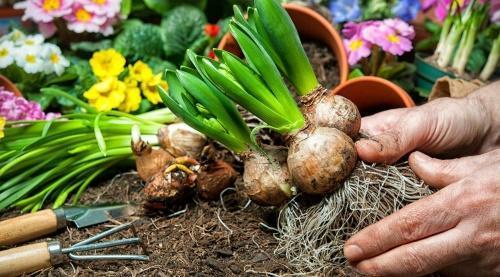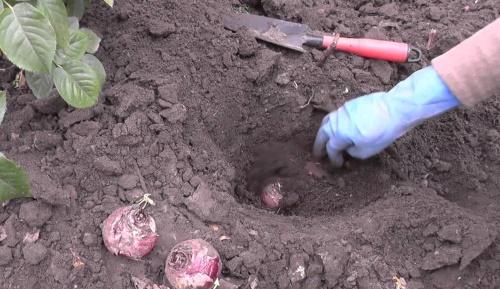How to transplant hyacinth: the nuances of the procedure in relation to indoor and garden flowers
 All the beauty of the hyacinth lies in its peduncle - lush and dense, with large flowers, it appears in early spring one of the first. In order for the flowering to remain the same colorful, and the sizes of the inflorescences are not crushed, it is important to know how to transplant the hyacinth. This applies to both indoor and garden specimens. Why? Over time, the bulb of indoor hyacinth becomes larger and larger, overgrown with children and all of them become cramped in the pot.
All the beauty of the hyacinth lies in its peduncle - lush and dense, with large flowers, it appears in early spring one of the first. In order for the flowering to remain the same colorful, and the sizes of the inflorescences are not crushed, it is important to know how to transplant the hyacinth. This applies to both indoor and garden specimens. Why? Over time, the bulb of indoor hyacinth becomes larger and larger, overgrown with children and all of them become cramped in the pot.
Garden hyacinths have more room to grow. However, despite this, they begin to hurt without a transplant, since various bacteria accumulate in the soil. Thus, transplanting is an important part of growing hyacinths, influencing not only their flowering, but also their overall development.
Features of transplanting indoor hyacinths
Hyacinths growing in pots on the windowsills, you can leave it alone as long as they have room to grow. When the bulb begins to clearly protrude from the flowerpot, it can and should be transplanted into a new container.
It is necessary to transplant these indoor plants at the beginning of autumn, because hyacinths are originally a garden crop. Even growing them indoors, you should adhere to the natural development cycle.
The transplant process itself is as follows:
- carefully remove the bulb from the flowerpot, trying to damage the roots as little as possible;
- choose a pot that should be slightly larger in diameter than the bulb itself (about 5 cm);
- lay drainage in it;
- top up with nutritious soil for bulbous plants;
- cover the ground with a thin layer of sand;
- place the onion in the center and cover it with soil, leaving a top about 1.5 cm high above the soil level.
If the hyacinth has children, they must be separated and planted separately in small pots.
After the transplant, it is better to put the flowerpot with hyacinth in the dark and cool (no higher than 10 degrees Celsius). It will remain there until the bulb releases new shoots. Then the flower can be transferred to a lighter and warmer room.
How to transplant garden hyacinth?
Before September hyacinths growing in the garden, there is no point in replanting. Firstly, if you hurry, then the bulb will wake up ahead of time and begin to germinate. Secondly, late planting will not leave her rooting time. In both cases, the ending will be the same - it will freeze at the first frost.
About a month before transplanting, you need to start preparing a new place for the flower. It should be bright, quiet and sunny. It is advisable to add to the site:
- coarse sand;
- ash;
- compost.
The dug out hyacinths should be shaken off the old soil and disinfected in a solution of potassium permanganate. Make shallow holes in the flowerbed and plant the bulbs in them.
Do not leave garden hyacinths above the soil. On the contrary, the bulbs must be safely hidden underground, but without fanaticism.An adult bulb deepens by 15 cm, small children are located closer to the surface. And finally, the final stage of transplanting will be mulching with sawdust or foliage. This blanket will protect the hyacinths from winter frost.